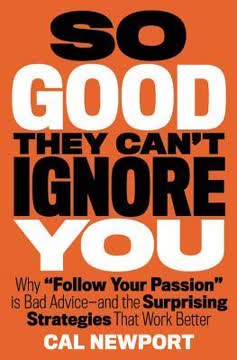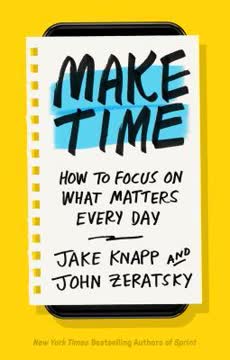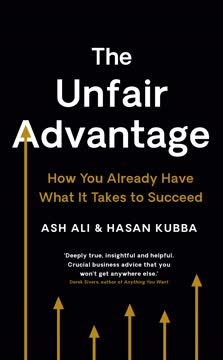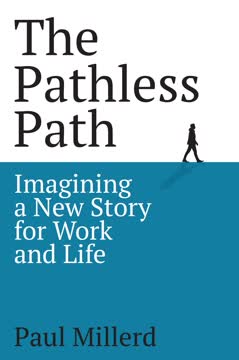Key Takeaways
1. Set a big-thinking goal and identify small steps to achieve it
Think of strengths and difficulties as being the result of a process that you engage in.
Visualize your future self. Start by identifying what you enjoy doing or think you would enjoy, and use this to shape your big-thinking goal. This goal should be something that can realistically be achieved with hard work over the medium term (2-10 years). Once you have a clear vision of your future self (ME+), identify the skills and activities needed to get there.
Break it down into small steps. Determine the regular activities you need to engage in to develop the necessary skills. These small steps should be manageable and fit into your current routine without causing major disruption. Examples might include:
- Attending networking events
- Taking online courses
- Practicing a specific skill for 30 minutes daily
- Reading industry-related books or articles weekly
By focusing on these small, consistent actions, you increase the likelihood of achieving your big-thinking goal over time.
2. Overcome personal narratives and biases that hold you back
Cognitive biases are errors in our thinking that occur because of our brains' attempts to simplify the world and make decisions quickly.
Identify limiting beliefs. Recognize the stories you tell yourself that may be hindering your progress. These narratives often stem from past experiences, societal expectations, or fear of failure. Common limiting beliefs include:
- "I'm not smart enough"
- "I always quit when things get tough"
- "I'm too old/young to change careers"
Challenge and reframe. Once you've identified these narratives, work on reframing them. Replace negative self-talk with more empowering beliefs. For example:
- "I'm capable of learning new skills"
- "I persevere through challenges"
- "It's never too late to pursue my passion"
Actively engage in processes that reinforce your new, positive narratives. For instance, if you believe you always quit, focus on consistently showing up for your small steps and celebrate your persistence.
3. Manage your time effectively by eliminating time-sinkers
Time is your most precious resource. You cannot get it back, you cannot buy more, and in today's world there are oodles of things that grab at it indiscriminately.
Identify time-wasters. Conduct a time audit to recognize activities that drain your time without contributing to your goals. Common time-sinkers include:
- Excessive social media use
- Unnecessary meetings
- Constant email checking
- Mindless TV watching
Implement strategies to reclaim time. Once you've identified your time-sinkers, develop strategies to minimize or eliminate them:
- Set specific times for checking emails and social media
- Decline or shorten unnecessary meetings
- Use website blockers during focused work periods
- Replace TV time with activities that support your goals
By reclaiming this time, you create space for the small steps that will move you towards your big-thinking goal. Remember, even small changes can yield significant results over time.
4. Cultivate self-belief and resilience to stay on track
Self-belief is malleable. Simply believing you can improve in a wide variety of skills gives an immediate boost to performance in those areas.
Foster a growth mindset. Embrace the belief that your abilities and intelligence can be developed through effort and learning. This mindset shift allows you to view challenges as opportunities for growth rather than insurmountable obstacles.
Build resilience. Develop strategies to bounce back from setbacks and maintain motivation:
- Reframe failures as learning experiences
- Practice self-compassion
- Focus on progress rather than perfection
- Surround yourself with supportive people
Regular reinforcement. Consistently remind yourself of your capabilities and past successes. Keep a journal of your achievements, no matter how small, and review it regularly to boost your confidence and motivation.
5. Navigate other people's biases and blind spots
How people see you may not reflect your abilities, skills and talent at any one moment in time.
Recognize common biases. Be aware of biases that others may hold, such as:
- Unconscious bias
- Representativeness heuristic
- Statistical discrimination
Strategies to overcome biases:
- Acquire and showcase relevant signals (e.g., certifications, experiences)
- Clearly communicate your skills and value
- Seek diverse feedback to verify and address concerns
- Build relationships to overcome initial biases
Be proactive. Take charge of your narrative by consistently demonstrating your capabilities and actively seeking opportunities to showcase your skills. Don't wait for others to recognize your potential; create situations where you can prove your worth.
6. Create an environment conducive to productivity and focus
The environment that we live and breathe in most definitely affects our performance, motivation, perseverance, and the choices we make at any given moment.
Optimize your physical space. Make intentional changes to your work environment to enhance focus and productivity:
- Ensure good airflow and natural light
- Maintain a comfortable temperature (16-24°C)
- Reduce noise distractions
- Keep your workspace clutter-free
Manage digital distractions. Create systems to minimize online interruptions:
- Turn off notifications on devices
- Use website blockers during focused work periods
- Designate specific times for email and social media checks
Establish routines. Create habits and rituals that signal to your brain it's time to focus. This might include:
- A specific pre-work routine
- Using the same workspace consistently
- Playing certain music or sounds during work sessions
By intentionally designing your environment, you make it easier to engage in the focused work necessary to achieve your big-thinking goal.
7. Practice gratitude and celebrate small wins
Loss aversion, if left unchecked, causes any loss you experience to feel many times harder than an equivalent gain in emotional currency.
Cultivate daily gratitude. Take time each day to acknowledge positive aspects of your life and journey. This practice helps balance the natural tendency to focus on negatives:
- Keep a gratitude journal
- Share appreciation with others
- Reflect on daily accomplishments, no matter how small
Celebrate progress. Regularly acknowledge and reward yourself for taking steps towards your goal. This reinforces positive behavior and maintains motivation:
- Set milestones and reward yourself upon reaching them
- Share achievements with supportive friends or mentors
- Visualize how each small step contributes to your larger goal
By actively focusing on gains and progress, you can counteract the psychological impact of setbacks and maintain a positive outlook on your journey.
8. Seek diverse perspectives and build a supportive network
Different types of thinkers give you different types of advice.
Diversify your network. Actively seek connections with people from various backgrounds, industries, and experiences. This diversity provides:
- Fresh perspectives on challenges
- Exposure to new ideas and opportunities
- A broader understanding of your field or goal
Cultivate meaningful relationships. Build a support system of mentors, peers, and advisors who can provide guidance, feedback, and encouragement:
- Identify potential mentors in your field
- Join professional organizations or networking groups
- Offer support to others to build reciprocal relationships
Leverage collective wisdom. Regularly seek input and feedback from your network to:
- Challenge your assumptions
- Identify blind spots
- Gain insights into industry trends or opportunities
Remember, your network is a valuable resource for both personal and professional growth. Invest time in building and nurturing these relationships.
9. Embrace failure as a learning opportunity
If you are not being told no, getting rejected or failing regularly, you are not challenging yourself adequately on your journey.
Reframe failure. View setbacks and rejections as valuable learning experiences rather than personal shortcomings:
- Analyze what went wrong and identify areas for improvement
- Recognize that failure is a natural part of growth and innovation
- Use failures as motivation to refine your approach
Learn from each experience. After each setback:
- Conduct a post-mortem to identify lessons learned
- Adjust your strategies based on new insights
- Seek feedback from mentors or peers for additional perspective
Develop resilience. Build your ability to bounce back from failures:
- Practice self-compassion
- Remind yourself of past successes and overcome challenges
- Focus on what you can control and learn from what you can't
By embracing failure as part of the journey, you become more willing to take calculated risks and push beyond your comfort zone, ultimately increasing your chances of success.
10. Prioritize sleep and self-care for long-term success
After a good night's sleep, you should be better able to roll with life's punches.
Establish healthy sleep habits. Prioritize getting adequate, quality sleep to enhance your resilience, creativity, and problem-solving abilities:
- Aim for 7-9 hours of sleep per night
- Create a consistent sleep schedule
- Develop a relaxing pre-sleep routine
- Optimize your sleep environment (dark, quiet, cool)
Practice self-care. Regularly engage in activities that replenish your energy and reduce stress:
- Exercise regularly
- Eat a balanced diet
- Practice mindfulness or meditation
- Engage in hobbies or activities you enjoy
Maintain work-life balance. Remember that sustainable success requires balancing your professional pursuits with personal well-being:
- Set boundaries between work and personal time
- Take regular breaks throughout the day
- Schedule time for relaxation and social connections
By prioritizing your physical and mental health, you ensure that you have the energy and resilience to consistently work towards your big-thinking goal over the long term.
Last updated:
FAQ
What's Think Big: Take Small Steps and Build the Future You Want about?
- Career and Personal Growth: The book focuses on using behavioral science to achieve career and personal development goals.
- Small Steps to Big Goals: It emphasizes the importance of taking small, consistent actions to reach ambitious goals.
- Cognitive Biases: The book explores how cognitive biases can hinder progress and offers strategies to overcome them.
- Resilience and Environment: It discusses the role of resilience and creating a supportive environment in achieving success.
Why should I read Think Big by Grace Lordan?
- Evidence-Based Strategies: The book provides practical, research-backed strategies for career and personal growth.
- Empowerment and Control: It empowers readers to take control of their journeys by understanding and overcoming cognitive biases.
- Actionable Insights: Each chapter offers actionable insights and exercises for immediate implementation.
- Behavioral Science Foundation: The advice is grounded in behavioral science, making it relatable and reliable.
What are the key takeaways of Think Big?
- Set Ambitious Goals: Define a clear, exciting career goal to guide your journey.
- Break Down Goals: Break big goals into manageable, actionable steps for consistent progress.
- Overcome Cognitive Biases: Recognize and address biases like the planning fallacy to make better decisions.
- Cultivate Resilience: Develop resilience to navigate challenges and maintain focus on your goals.
What are the best quotes from Think Big and what do they mean?
- “Small changes that are actioned regularly have disproportionate effects on our life outcomes.”: Highlights the power of consistency in making small changes for significant results.
- “What gets measured gets done.”: Emphasizes the importance of tracking progress to ensure accountability and motivation.
- “You can change your own life outcomes.”: Reinforces the idea that deliberate actions and choices can influence career paths.
How does Grace Lordan suggest setting a big-thinking goal in Think Big?
- Visualize Your Future Self: Imagine your future self achieving the big goal to clarify your desires.
- Identify Enjoyable Activities: Focus on activities you enjoy to ensure alignment with your passions.
- Make It Specific: Define your goal clearly and realistically to create a roadmap for achievement.
What are cognitive biases, and how do they affect my career according to Think Big?
- Definition: Cognitive biases are systematic errors in thinking that affect decision-making.
- Impact on Progression: Biases like the planning fallacy can lead to underestimating task time, causing setbacks.
- Overcoming Biases: Awareness and structured planning can mitigate biases, enhancing decision-making.
What practical steps does Think Big recommend for overcoming procrastination?
- Set Clear Intentions: Establish specific, actionable intentions to combat procrastination.
- Time Audits: Identify time-sinkers in your routine to reallocate time productively.
- Create Accountability: Use commitment devices to add consequences and encourage staying on track.
How can I apply the insights from Think Big to my daily routine?
- Daily Planning: Set weekly intentions to keep your big-thinking goal in focus.
- Regular Reflection: Conduct weekly post-mortems to assess accomplishments and adjust strategies.
- Seek Feedback: Actively seek diverse feedback to identify improvement areas and stay motivated.
What is the significance of resilience in Think Big?
- Definition: Resilience is the ability to bounce back from setbacks and maintain focus.
- Building Resilience: Develop resilience through self-awareness and understanding emotional responses.
- Long-Term Success: Resilience helps persevere through difficulties, essential for long-term success.
How does Think Big address the role of environment in achieving career goals?
- Impact of Environment: A supportive environment enhances motivation and productivity.
- Making Small Tweaks: Organize your workspace and surround yourself with positive influences.
- Creating Supportive Networks: Build a network of diverse individuals for encouragement and new ideas.
How does Think Big suggest handling setbacks?
- Reframe Negative Experiences: View setbacks as growth opportunities rather than failures.
- Practice Self-Compassion: Acknowledge that setbacks are normal and be kind to yourself.
- Seek Support: Lean on friends and colleagues for encouragement and perspective.
What are some practical strategies for creating a conducive environment in Think Big?
- Minimize Digital Distractions: Limit interruptions by managing digital notifications.
- Optimize Physical Space: Ensure a clutter-free, well-lit workspace for better focus.
- Incorporate Nature: Add plants to your workspace to enhance attention and reduce stress.
Review Summary
Think Big receives mostly positive reviews for its practical approach to career development and goal-setting. Readers appreciate the behavioral science insights, actionable exercises, and the author's personal experiences. Many find it helpful for career transitions and self-improvement. Some criticisms include that it may not be suitable for all audiences and can be overwhelming with information. Overall, reviewers praise its practicality, scientific grounding, and ability to inspire readers to pursue their goals through small, manageable steps.
Similar Books









Download PDF
Download EPUB
.epub digital book format is ideal for reading ebooks on phones, tablets, and e-readers.




